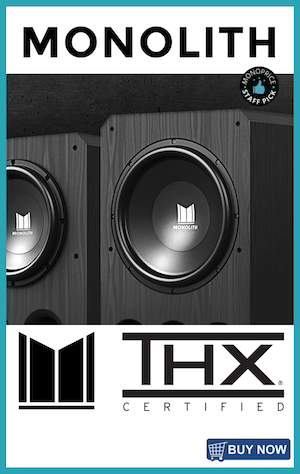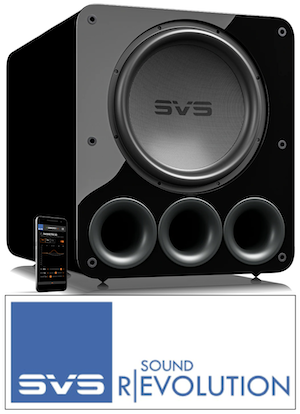- Manufacturer & Model
- Bluesound Pulse 2 Streaming Wireless Speaker
- MSRP
- $399
- Highlights
- Simple setup, whole home capability with other Bluesound devices, source media from internet radio stations, cloud music services, and your own local music library, free Controller app (iOS, Android, Kindle Fire, and Windows & Mac OS X desktops), excellent sound quality.
- Summary
- Bluesound's attractive looking Pulse 2 packs a big punch, giving owners access to wide ranging streaming capabilities in a package that's compact in size. Used on its own or as part of a larger BluOS based streaming system, owners will reap the benefits of an intuitive and feature-rich app, in addition to significant audio output laced with robust bass and impressive volume levels. Sound quality is definitively excellent.
Bluesound PULSE 2 Unboxing and Features
As mentioned in my review of the NAD C 368, the Pulse 2’s packaging is impressive. It reminded me of the process of unboxing a modern Apple device, which adds a sense of drama and excitement to the product. It may be a small thing, it may not impact performance, but it does give the perception that it is a high-end product.
Once unpacked, I was struck by two things. First, the speaker is heavy and surprisingly solid. Second, it’s much better looking than I’d assumed. My sample was white with a silver metal grill, loaded with a lot of subtle details that combine to make for a very classy modern package: an all-white body, a silver machined grill, a polished Bluesound emblem, and a black shiny touch control panel. In my opinion, the Bluesound speakers are the best-looking Wi-Fi speakers on the market. The build quality is equally good, clearly better than other products I’ve used in this segment.
As for the feature-set, it’s a surprisingly feature-packed speaker with capabilities and components that are more sophisticated than most might expect for a wireless table design. Designed by Paul Barton of PSB Speakers, it contains two 2 3/4” aluminum cone full range drivers with a 1” dust cap. When I called Barton to ask about the design, he told me the 1” dust cap acts a bit like a dome tweeter and contributes to its extended high-frequency response. He noted that the speaker measures flat past 20khz even though there are no dedicated tweeters. Between these full range drivers is a sizable 5.25” mid-bass driver that covers bass duty for the left and right speakers, augmented by a pair of ports on either side. The amplifier totals 80 watts, using 3 digital amplifiers which are derived from NAD’s DIRECTDIGITAL technology. In my discussion with Paul Barton, he said the amplifier is more like 100 watts RMS, using less conservative specs, with 25 watts going to each full range and 50 watts going to the mid-bass. Inside the speaker is a small low powered computer containing an ARM Cortex A9 processor, a wireless and wired LAN network card, a Bluetooth receiver with aptX support, and a 35 bit / 855 khz DAC derived from other NAD products. As you can see, this audio beast has the makings for true high-end sound; something you’d expect from an audiophile product, not a wireless speaker.
Around back you find a combination analog and optical digital input using a 3.5mm connector, an RJ45 network connector, a USB port for thumb drives loaded with music, and an IEC power port. The latter of which shows that the power supply is built in. Who wants to have to hide a power supply with such a beautiful product? The controls use a LED-lit touch panel on the top of the speaker, or the BluOS application.
The only missing feature on the Pulse 2 is automatic room correction. While bass output was full and well extended, I found it to be a bit boomy in some rooms. Many competing small smart speakers from companies like Apple and Sonos include room correction, and I think this would be a useful add-on to the Bluesound line. Ultimately, this is a minor omission and didn’t impact overall performance.
BluOS? What is this?
The core of Pulse 2 and associated NAD products is BluOS. Some may wonder why we need another operating system or music player because so many already freely exist. The truth is: few get it right and many companies are still looking to produce the best version of this sort of software. I touched upon this operating system in my NAD C 368 review but decided to give it more attention here. BluOS serves several purposes:
- It provides a digital interface to connect with and control all associated devices
- It ties varied digital sources together into one system, allowing users to listen to TIDAL, Spotify, TuneIn, HDTracks, your own music on thumb drives or hard drives, etc. without having to select or support the apps separately.
- It delivers multi-room capability, letting users move high-end sound into a whole house system all centrally controlled with access to the same music.
I found the music management capabilities of the software to be intuitive and full-featured. BluOS screens are as simple and snappy as the best of them. I can’t imagine anyone being unhappy with BluOS functionality or its interface – it really is a terrific piece of software. Most of my time was spent using TIDAL and specifically direct access to TIDAL Masters. With the BluOS app, there is a much more intuitive “Masters” button on the front screen as compared to the normal TIDAL app. BluOS is also MQA certified and completely decodes MQA tracks, including TIDAL Master.
PULSE 2 Listening Sessions
Since the PULSE 2 was designed to be somewhat portable, allowing users to bring music just about anywhere, it made sense to try it out in several different locations. I set it up in my dining room, kitchen, living room, bedroom, and (mostly) my office. I also set it up alongside the NAD C 368 for a direct comparison to a full-sized system. To summarize: It worked well everywhere I tried it.
The sound for the PULSE 2 struck me as very full, punctuated by controlled and extended bass. It was shocking just how much bass this speaker could produce; it was truly visceral at times. Who would think that a single 5.25” woofer with a 50-watt amp could produce chest thumping bass? Chalk that up to Paul Barton’s excellent design chops, decades of experience, and the power of modern DSP. Once familiar with the big sound of this compact speaker, its neutral tonal balance and extended highs began to impress. It does produce bass with a bit of a heavy hand, but most people prefer that from smaller speakers, and it has bass and treble tone controls if you don’t like it.
Listening to “Despacito” showed natural sounding voices, an extended bass response, and how similar the presentation was to that of the NAD C 368 connected to a pair of speakers. It was fully enjoyable. Next, I cued up Sam Smith’s “Too Good at Goodbyes.” This beautiful gospelesque song came through majestically, with all the blue toned soul intact. Charlie Puth’s “How Long” has a nice bass line that was delivered full and dynamic. He has a wonderful falsetto voice and it sounded exceedingly natural on the PULSE 2. I have a hard time believing that anyone would fault this speaker’s musical prowess.
Who doesn’t enjoy a song with a great rhythm and a hook? Jain’s “Makeba,” used in Levi commercials, is just such a song. Putting on this song and turning the volume up to its halfway point (A good 92dB’s), I privately proceeded to tribal dance around my office, praying in my head that nobody would suddenly bust in and see this embarrassing display of musical enthusiasm. The sound was dynamic, full, clean, and every bit as enjoyable as I’ve ever heard. Many people would be shocked to realize such sound was coming from a speaker that is just 17” long x 8” high, basically the size of a shoebox.
As a final torture test, I decided to cue up a large orchestral piece: Mozart’s “Requiem: Introitus: Requiem” by the Choir of King’s College. This is a very dynamic and complex musical piece, and many believe this type of music shows the true musical capability of a system’s best. The tonal colors, ambiance, familiar sounds (such as choral voices), and acoustic nature of these recordings make it easier for us to compare against a known reality. The PULSE 2 reproduced this song with all its reality intact. In fact, the speaker sounded much larger than it had with pop music, with the orchestra extending far beyond the speaker itself and the choir filling a good portion of the bookshelf. It didn’t reproduce a realistically large presentation of the recording, but it also did not embarrass itself. Given the Bluesound Pulse 2’s intended purpose, I can happily live without a soundstage.
CONCLUSION
I was really impressed by the Bluesound PULSE 2. Its streaming capabilities, sound quality, impressive volume, compact size, and good looks combine to make a compelling speaker. Used on its own or as part of a larger BluOS based streaming system, I can see this speaker making any audiophile happy. It won’t replace a full-sized audiophile system, but that’s not its purpose! The Bluesound Pulse 2 is perfect for the music lover looking for great sound in every room. It offers an intuitive and feature-rich app, significant output, robust bass, and great placement flexibility.
Specifications
● Supported Audio Formats: MP3, AAC, WMA, OGG, WMA-L, ALAC, OPUS, FLAC, MQA, WAV, & AIFF
● Native Sampling Rate 32-192 kHz
● Bit Depths: 16-24
● Frequency Response: 45hz – 20khz
● DAC: 35-bit, 844khz
● Distortion: THD+N – 0.005%
● Speakers: 2 x 2.75”, 1 x 5.25”
● Power Output: 80W Tri-Amplified, DIRECTDIGITAL Amplifier
● Supported Operating Systems: Plays music from network shares on the following desktop operating systems: Microsoft Windows XP, 2000, Vista, 7, 8, Apple Macintosh
● Free Internet Radio: TuneIn Radio, iHeartRadio, Calm Radio, Radio Paradise
● Supported Cloud Services: Amazon Music, WiMP, Slacker Radio, Qobuz, HighResAudio, JUKE, Deezer, Murfie, HDTracks, Spotify, TIDAL, Napster, KKBox
● Integration Partners: Control4, RTI, Crestron, URC, roon
● Album Art: JPG
● Network: Gigabit Ethernet RJ45, 802.11 b/g/n Wi-Fi
● USB: 1x Type-A (Fat32 or NTSF formatted) port for connection to USB memory sticks and supported peripherals, 1x Type-B (mini) for product servicing
● Audio Input: Combo – Toslink/3.5mm
● Audio Output: Headphone output – 3.5mm stereo
● Power: Universal tri-pin AC Cord input (100-240ac)
● Wireless: aptX Bluetooth wireless built-in
● Mobile Interface: Free Android and iOS App Available Online at Google Play and Apple App Store
● Pushbuttons: Simple top-panel touch controls
● Control: IR Sensor built-in – Front panel
● Processor: ARM CORTEX A9, 1GHz
● Unit Weight: 16.5” x 7.8” x 7.55”
● Power Consumption: 14 Watts
Last edited by a moderator:










